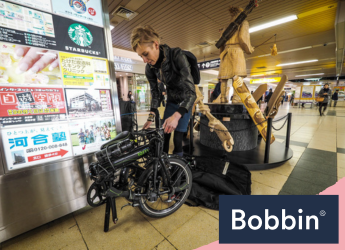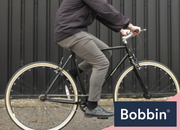Can You Take a Folding Bike on a Plane?
Yes, you can take a folding bike on an aeroplane. Normally, taking a bike on a flight will incur extra baggage handling fees, with each airline applying its own rules for luggage categorisation.
A folding bike can be taken on buses as hand luggage, provided it’s folded, and the bus isn’t too busy, as per TfL’s guidelines. However, the rules are different if you’re taking it on a plane.
There are a few things to keep in mind to save yourself the hassle and make your journey as smooth as possible. Not to mention avoiding extra fees and preventing damage to your bike. Here’s what you need to know.
Airline Rules and Regulations for Flying with a Bike
Most airlines need you to partially disassemble your bike and pack it in a bag or box. The weight and size limits vary, but it has to fit through the oversized luggage X-ray machine when laid on its side. Usually, it needs to be under a metre across—90cm is even better.
This shouldn’t be a problem with a folding bike, as it can be folded into a more compact form and packed in a large bag. But, as mentioned, it’s probably not ideal as carry-on luggage—let alone trying to pack it in there. A lot can go wrong if you’re not careful about how you check your bike in, so it’s best not to overlook (more on this in the following sections).
Note: Make sure to book your bike as ‘sporting equipment’ when you buy your ticket.
How to Take a Folding Bike on an Aeroplane
These tips can save you the hassle, extra fees, and potential damage:
Pack your folding bike
Taking your folding bike with a carry handle might seem like a good idea, but it probably won’t get past security. So, treat it like your clothes and other essentials—pack it in a suitcase-sized bag or case so it can go as ordinary luggage.
The good thing about folding bikes is that they already come folded in their original packaging. If you can, fold it back into its box, or a padded bike bag will do. That way, you’re more likely to avoid oversized baggage fees.
Dismantle when needed
Most airlines require all types of bikes, from kids’ to adult bikes, to be dismantled. This means the pedals need to be removed, and the tyres should be let down to at least 1 bar below the maximum pressure shown on the sidewall. This makes packing easier and helps prevent damage.
Note: Don’t pack CO2 canisters (for rapid tyre inflation) without checking your airline’s rules, as they might be confiscated. Instead, consider bringing a small hand pump as a backup. It’s also easier to just buy them at your destination—just make sure it’s a pump-type one so you can bring it back with you.
Check weight and size restrictions
While folding bikes are more compact than standard bikes, they still need to meet such requirements. These vary, but 23kg is a common checked baggage allowance. Weigh your packed bike in advance and check your airline’s policy on sporting equipment to avoid any last-minute surprises at the airport.
Tip: Airlines can be unpredictable with fees, so it’s wise to have a little extra set aside to be safe.
Label your bike bag/box
Stick a “Fragile” label on multiple sides so airport staff can handle it with care. Adding a name tag helps, too—include your contact details in case it gets misplaced.
You can also mark your bag with bright tape or a luggage strap to make it easier to spot at baggage claim. Might as well do this for all your checked luggage!
Can You Take a Folding Bike as Hand Luggage?
Technically, yes and no. A folding bike is compact enough to qualify as hand luggage, but most airlines won’t allow it. For one, it might not fit in the overhead locker, and even if it does, it could be damaged during the flight.
To avoid issues, it’s usually best to check it in as sporting equipment. Again, always double-check your airline’s policy before you fly.
We hope you find these tips useful. Safe travels!
Up next on your reading list: Best Ways to Carry a Folding Bike








